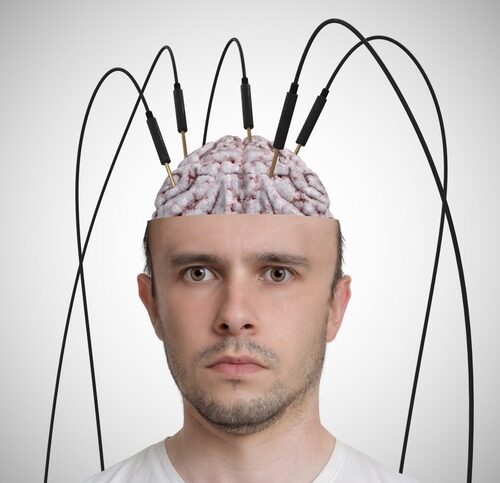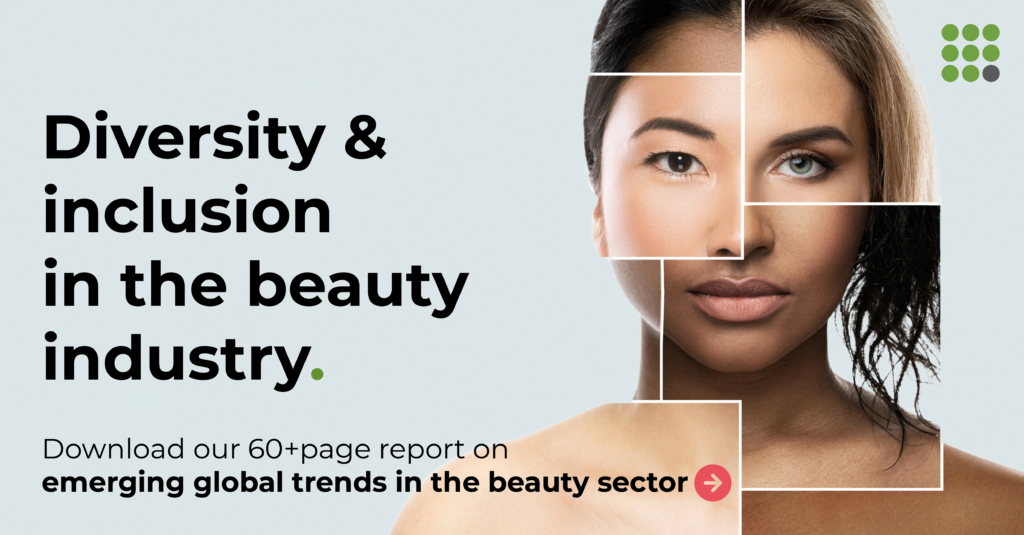If you could understand and influence human emotion, could you use this ability to increase sales and identify the most compelling advertisements, the perfect price point, or the most flawless product mix?
While advertisers, psychologists, and salespeople have understood this connection for years, only a few have been able to use it to their advantage. Fortunately, neuromarketing is putting the ability to understand consumer behavior into the hands of many.
In the modern business landscape, with constantly changing consumer preferences, companies must understand what drives customer behavior to stay ahead of the curve.
“People buy on emotion and justify on logic.” Zig Ziglar
Recent research has revealed that emotional decisions are not irrational or flawed, and our unconscious mind has its own logic. It processes millions of bits of data seamlessly without becoming overwhelmed, unlike our conscious mind, which has a bottleneck due to the limited capacity of our working memory to process only 3-4 pieces of new information at a time.
However, the unconscious mind’s brilliance stems from its lifetime of learning from our successes and failures, and it makes decisions based on heuristics that have evolved. These decisions are often successful, leading experts to rely on their intuition or “gut feelings.”
The Iowa Gambling Task study highlights the effectiveness of the emotional brain. In this study, subjects were given a fixed budget and four decks of cards to draw from to win as much money as possible. The decks were arranged so that two offered consistent wins, while the other two had high payouts but carried significant risks. Although it took about 50 cards for people to stop drawing from the dangerous deck, it was on the 80th card that they could explain why. On the other hand, the subjects’ anxiety levels were tracked using a device that measured the electrical conductance of their skin, revealing that their hand trembled when they reached for the risky deck after drawing only ten cards. Hence, our intuition or unconscious mind quickly senses danger and makes decisions. On the contrary, logic is slow.
Marketing is all about understanding and influencing consumer behavior. For years, brands have relied on traditional market research methods to understand customers’ needs and preferences. However, with advancements in neuroscience, researchers can now use cutting-edge tools and techniques to gain deeper insights into consumer behavior.
This blog post will explore neuroscience applications in marketing, its history, and the tools used to study consumer behavior. We will also discuss the use cases of neuroscience in marketing, the new methods in consumer neuroscience research, and the future of neuromarketing.
What is neuromarketing?
Neuromarketing or Neuroscience marketing involves utilizing physiological and neural data to understand the drivers behind customers’ choices, inclinations, and decisions. By applying this knowledge, brands can enhance their advertising, product development, pricing, and other marketing strategies.
As a multidisciplinary field, there are many definitions of the term, but in simple terms, it is a form of decision science applying neuroscience ideas to the marketing field.
In a nutshell, neuroscience applications in marketing refer to using neuroscience techniques and tools to understand consumer behavior and develop effective marketing strategies.
The concept is based on the idea that a person’s behavior is driven by their brain activity and that marketers can use this knowledge to create more effective marketing campaigns.
Neuromarketing and neuroeconomics have been used interchangeably, confusing their differences. Many experts consider neuromarketing a subgenre of neuroeconomics that studies neuroscience in decision-making. But others argue that neuromarketing should be considered independent since it focuses on marketing.
History and Origins of Neuroscience for understanding consumer behaviors
The origins of neuroscience can be traced back to the early 19th century when researchers began studying the nervous system’s structure and function. Over time, the field has expanded to include studying brain activity and its impact on behavior. In the 1990s, researchers began using brain imaging techniques such as fMRI and EEG to study brain activity and its relationship to behavior.
The term “neuromarketing” was popularized by Dutch marketing professor Ale Smidts in 2002; however, the field’s roots date back to the 1990s when rigorous research and experimentation began. Among the pioneers was US marketing professor Gerald Zaltman, who filed a patent for the Zaltman Metaphor Elicitation Technique (ZMET) four years before the term “neuromarketing” was coined. ZMET is a marketing research tool that delves into people’s conscious and subconscious thoughts using carefully curated image sets to elicit positive emotional responses and potentially influence purchasing decisions.
The use of neuroscience in marketing began in the early 2000s, with companies like Coca-Cola and Frito-Lay using fMRI to study consumers’ responses to their products.
One of the earliest recorded neuromarketing experiments occurred at Baylor College of Medicine in 2003, led by Professor of Neuroscience Read Montague. The study was an extension of a 1975 taste test challenge between Pepsi and Coca-Cola, where participants blindly tasted and selected their preferred drink. Although the results showed Pepsi as the winner, Coca-Cola continued to dominate the cola market share. Curious, Montague repeated the experiment, using fMRI scans to track participants’ brain activity this time.
The study revealed that different parts of the brain lit up depending on whether participants were aware of the brand they were consuming. Coca-Cola triggered responses from the medial prefrontal cortex associated with attention and short-term memory. When aware of the brand, participants preferred Coca-Cola over Pepsi, but when oblivious to the brand, they preferred Pepsi, as indicated by the ventral putamen, responsible for decision-making and reward perception.
Using neuroscience tools to sweeten market research
Consumer neuroscience tools are the instruments used to study brain activity and behavior. These include biometric tools like eye tracking, facial recognition software, and imaging tools like EEG and galvanic skin response. Each tool has its inherent strengths and limitations, and usage would depend largely on the study’s goals.
Eye tracking
Eye tracking is a tool used to measure eye movements and gaze behavior. It is used to study how people process visual information and can help marketers understand which elements of their advertising or website design are most effective.
Facial recognition software
Facial recognition software analyzes facial expressions and emotions. It is used to study consumers’ emotional responses to products, advertising, and other marketing materials.
fMRI
Imaging techniques such as fMRI are used to measure brain activity. They study how the brain processes information and responds to various stimuli.
ECG
ECG is used to measure heart rate and heart rate variability. It is used to study the emotional response to marketing materials.
Electroencephalography
Electroencephalography (EEG) is a neuromarketing research method used to measure cognitive processes, such as calculations, to predict consumer behavior.
Galvanic skin response
Galvanic skin response is used to measure changes in skin conductance.
Tests used to understand consumer behavior
Neurolinguistic programming (NLP)
Neurolinguistic programming (NLP) focuses on the relationship between language, behavior, and the brain. It operates under the belief that language can shape thoughts and emotions and that modifying language can change thoughts and emotions. NLP is commonly used in marketing research to investigate how language and framing influence consumer behavior and decision-making. For instance, it can be used to analyze how the language used in an advertisement affects the emotional response of consumers or how presenting a product in a specific manner can impact purchasing decisions.
Implicit association tests (IATs)
Implicit association tests (IATs) are psychological assessments that measure unconscious biases and attitudes by analyzing the time it takes a person to associate a particular word or image with a specific category. In marketing research, IATs are often employed to study consumer attitudes and preferences and detect potential biases in decision-making processes. For example, IATs can be conducted to examine consumer attitudes toward various brands, products, or marketing messages.
NLP and IAT can provide valuable insights into consumer behavior and decision-making processes and can be used with other neuroscience marketing research methods.
Uses cases and applications of Neuroscience in Marketing
Several applications of neuroscience in marketing include advertising, branding, website optimization, pricing, product development, and product experience.
For example, eye tracking can identify the most effective placement of ads on a webpage, while facial recognition software can identify the emotional response to an ad.
New Methods in Consumer Neuroscience Research
Recent advancements in technology have opened up new avenues for consumer neuroscience research. Virtual Reality (VR) can create realistic environments for studying consumer behavior, while mobile EEG devices allow researchers to study brain activity in real-world settings.
Another exciting development is using machine learning algorithms to analyze large datasets of brain activity. This approach can help identify patterns and relationships between brain activity and behavior, providing deeper insights into consumer behavior.
Limitations of neuromarketing
- Limited Sample Size
Neuromarketing research often requires expensive equipment and specialized expertise, which limits the number of participants involved in the study. This limited sample size could lead to biased results and generalization errors.
- Difficulty in Interpretation
The interpretation of brain data is a complex process requiring the expertise of specialized neuroscientists. There often needs to be explicit agreement on what a particular brain activity pattern means, which can interpret neuromarketing data as challenging.
- Lack of Real-Life Relevance
Most neuromarketing research is conducted in laboratories and may not accurately reflect real-world scenarios. In real-life environments, consumers’ behavior is often influenced by several external factors, such as culture, social norms, and personal experiences.
- High-Cost
Neuromarketing research requires expensive equipment and specialized expertise, which can be cost-prohibitive for small and medium-sized businesses. As a result, only large corporations can afford to invest in such research.
- Ethical Issues
Neuromarketing research raises ethical concerns, such as the possibility of manipulating consumer behavior and invading their privacy. Consumers may be unaware of the research’s purpose, and their data could be misused for commercial gain.
Ethical considerations
- Informed Consent
Consumers should be fully informed about the research’s purpose and the data collection process. They should have the right to opt out of the study and have their data removed.
- Privacy
Neuromarketing research involves collecting sensitive personal information, which requires adequate data security measures to prevent data breaches and unauthorized access.
- Transparency
The results of neuromarketing research should be transparently communicated without manipulating the data or using it to mislead consumers.
- Fairness
Neuromarketing research should not be used to exploit vulnerable consumers or unfairly target specific groups.
- Responsibility
Brands should take responsibility for their actions and use neuromarketing research ethically without manipulating consumers or promoting harmful products.
The Future of Neuroscience in Market Research
With the advancement of technology, neuroscience in marketing is expected to become even more prevalent. Gaining deeper insights into consumer behavior can help brands create more effective marketing campaigns, improve product development and enhance the overall customer experience.
However, as detailed above, there are concerns about the ethical implications of using neuroscience in marketing. Critics argue that using these techniques can be invasive and that there are potential risks to consumer privacy.
As with any technology, using neuroscience in marketing responsibly and ethically is paramount. By doing so, brands can harness the power of neuroscience to gain deeper insights into consumer behavior while respecting consumer privacy and autonomy.
Neuroscience applications in marketing offer exciting opportunities to gain deeper insights into consumer behavior. As technology continues to evolve, new methods in consumer neuroscience research are emerging. The future of neuroscience in marketing looks promising, offering new ways to improve the customer experience to drive business success.
Kadence International helps leading brands make game-changing decisions. If you are looking for a research partner to help better understand your customers, we would love to help. Simply fill out our Request for a Proposal here.
Get regular insights
Keep up to date with the latest insights from our research as well as all our company news in our free monthly newsletter.





 Senior Marketing Executive
Senior Marketing Executive Sales & Marketing
Sales & Marketing General Manager PR -Internal Communications & Government Affairs
General Manager PR -Internal Communications & Government Affairs Vital Strategies
Vital Strategies
 Customer Intelligence Director
Customer Intelligence Director